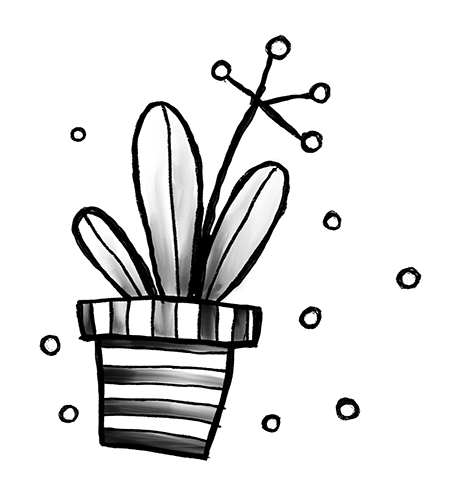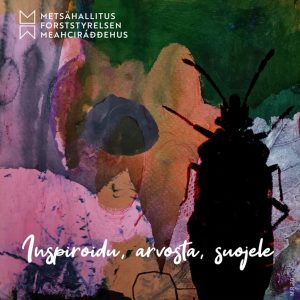RDI Work as a Builder of a Sustainable World – “Sustainable Wednesday Blog Series, Part 3”

Universities of Applied Sciences are committed to the Rector’s Conference of Finnish Universities of Applied Sciences Arene‘s programme for sustainable development and responsibility. The common goal of universities of applied sciences is to be sustainable, responsible and carbon neutral by 2030.
This blog series elaborates on how Humak takes into account the principles of sustainable development in the areas of education, RDI work as well as management and personnel competence from an ecological, social and cultural point of view. Additionally, the sustainable development program involves an annual calculation of our carbon footprint, through which Humak strives to reduce its own impact on the climate. In the blog series, we also present the basics of the calculation and the evolution of Humak’s carbon footprint. Blog posts will be published about once a week on Wednesdays until May 2022. The Sustainable Wednesday blog series continues with blog number three: RDI Work as a Builder of a Sustainable World.
Part 1: Towards a More Sustainable and Responsible Humak
Part 2: Building a Carbon Neutral Humak
Blog 3: “RDI Work as a Builder of a Sustainable World”
Research, development and innovation activities, i.e. RDI activities, build Finnish society. What is being researched, developed or invented today will determine the world of tomorrow. All of this is done in universities of applied sciences every day. Developing better technology, a more sustainable world and a fairer society. It is about activities that benefit the entire innovation system. With RDI activities, we are able to have a huge impact on the world. With a total of EUR 230 million and around 5,000 employees involved, it is possible to bring about a significant change.
In order to promote sustainability and responsibility work, universities of applied sciences have made promises together to increase their handprint and reduce their footprint. All 24 universities of applied sciences have pledged to live up to these promises and thereby build a more sustainable and responsible future. The program for the sustainable development and responsibility of universities of applied sciences (Arene 2020, 7) contains the following promises related to RDI activities:
- Through our RDI activities and student involvement, we will produce solutions to sustainability challenges and promote sustainable development in cooperation with the higher education community, business life and the public sector.
- We will use the jointly developed criteria for developing the sustainability and responsibility of RDI.
- We will develop our operations so that one of the reasons we are a sought-after partner and employer is our sustainable and responsible RDI that is ecologically, socially, culturally and economically sustainable.
What Is RDI Dynamis?
To deliver on those promises, teamwork, common criteria, communication, planning, etc. are needed. These are being carried out by RDI Dynamis, a joint working group for sustainable RDI activities of universities of applied sciences. The mission of this working group of eight universities of applied sciences is to agree on common ways to reduce our own environmental footprint in RDI activities, but also to produce new solutions to sustainability problems.

Social and Cultural Innovations in Support of Ecological Sustainability
The potential of RDI to contribute to the acute problems of sustainable development is not just the development of new technological innovations. For example, all the technological capabilities to capture carbon dioxide from the atmosphere to combat climate change already exist in the world. Nevertheless, these means are not widely used. Social and cultural innovation is needed for humanity to be prepared to make adequate economic investments. Work is also needed to change attitudes so that inventions can actually be implemented. It is in the development of social and cultural sustainability that Humak has an opportunity to bring its own expertise into sustainability work. In line with our mission, we produce competencies that increase community spirit, accessibility and well-being, enabling a sustainable lifestyle for present and future generations.

Goal of Humak’s RDI Activities Is to Build a More Sustainable World
Humak’s aim is to implement positive measures in its RDI activities, which are called the handprints of sustainable development. An university of applied aciences can increase its direct handprint, for example, by developing more environmentally friendly operating models. Its indirect handprint can be increased, for example, by spreading a positive attitude towards sustainable development through education or cooperation. Access to information and a fair world increase the opportunities to promote positive solutions. In these areas, Humak can, through RDI, develop concrete ways to address sustainability issues based on its own values: building a fair and sustainable world.
The common goal of universities of applied sciences is for Finnish universities of applied sciences to be known as attractive partners and employers also through their sustainability work and ecologically, socially, culturally and economically sustainable and responsible operations. This applies to RDI activities, which, alongside education and by developing it, produce a world in line with our common goals. In this job, Humak wants to be visible and involved. Through RDI activities, we can be part of the solution.
References:
Ammattikorkeakoulujen rehtorineuvosto Arene 2020. Sustainable, responsible and carbon-neutral universities of applied sciences. Program for the sustainable development and responsibility of universities of applied sciences. Accessed 13.4.2022. https://www.arene.fi/wp-content/uploads/Raportit/2020/Sustainable%2C%20responsible%20and%20carbon-neutral%20universities%20of%20applied%20sciences.pdf?_t=1606145574
Humak University of Applied Sciences. Human connections. Humak’s strategy 2021-2030. Accessed 13.4.2022. https://www.humak.fi/en/info/strategy-2030/
Vipunen Education Statistics Finland 2022. Research and development. Accessed 13.4.2022. https://vipunen.fi/fi-fi/kkyhteiset/Sivut/Tutkimus–ja-kehitysty%C3%B6.aspx
Taatila, Vesa 2021. Mistä me puhumme, kun puhumme TKI:sta? Ammattikorkeakoulujen rehtorineuvosto Arenen blogit. Accessed 13.4.2022. https://www.arene.fi/ajankohtaista/mista-me-puhumme-kun-puhumme-tkista/ (in Finnish)
Text: Timo Parkkola, Education Director, Humak Universtiy of Applied Sciences, 20.4.2022
Translation: Mari Ervasti

